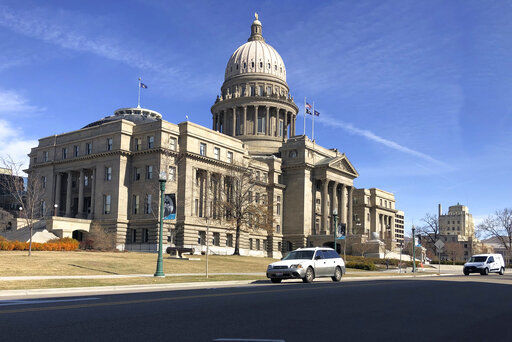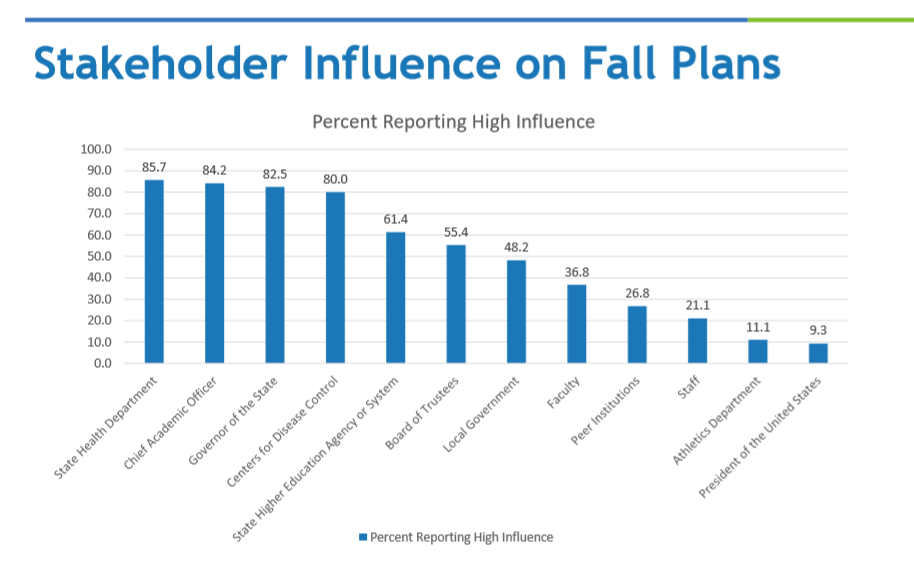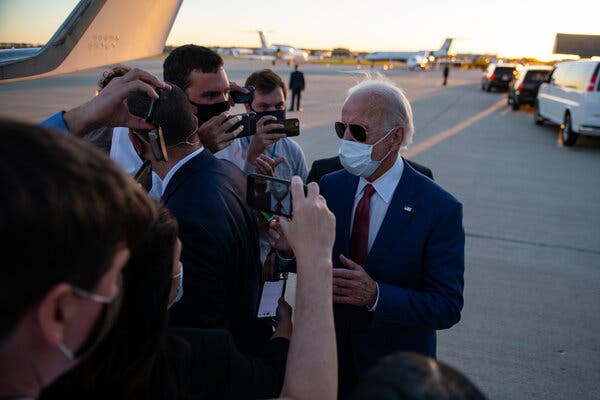Is Idaho turning a little blue? Primary might provide clues

This Wednesday, March 4, 2020, photo shows the Idaho Statehouse in Boise.
AP Photo/Keith Ridler
BOISE — Idaho last year was the nation’s fastest-growing state, with close to 37,000 new residents boosting its population to nearly 1.8 million.
In the past decade, according to the U.S. Census Bureau, the deeply conservative state has seen a population jump of more than 200,000. Studies indicate many have come from liberal-leaning California, Oregon and Washington.
But are those new residents bringing blue-state politics? Or are they Republicans fleeing the coast for conservative Idaho?
An answer could emerge Tuesday when Idaho holds its presidential primaries. Democrats are using a primary for the first time after picking Sen. Bernie Sanders over Hillary Clinton at a caucus in 2016. President Barack Obama handily won the Democratic contest in Idaho over Clinton in 2008.
President Donald Trump is expected to have little difficulty winning the Republican primary or the state in the November general election. The last time Idaho voted for a Democratic presidential candidate was Lyndon Johnson in 1964.
Still, officials say switching to a Democratic primary this year could significantly increase the number of participants, and play a role in the outcome.
Former vice president Joseph Biden drew more than 100 donors at an Idaho event in August. Sen. Elizabeth Warren had scheduled a visit this weekend but ended her campaign Thursday.
“We hope that Idaho continues to grow in diversity and political affiliation, and that will strengthen our party and candidates,” said Lindsey Johnson, spokeswoman for the Idaho Democratic Party.
Jaclyn Kettler, a Boise State University political scientist, said it appears Democrats, in general, are moving to urban areas and Republicans to more rural areas, continuing the urban-rural divide between Democrats and Republicans prevalent in states in the U.S. West.
“We’ve definitely seen some areas like Boise becoming bluer in the last few years,” she said. “More conservative voters are moving into Canyon County and northern Idaho.”
Yet Democrats see the possibility of a bluish tinge appearing in Idaho following its 2.1% population increase last year. The House, for example, went from 11 to 14 Democrats in the 2018 election. Democrats flipped four urban district seats, but lost an urban district in northern Idaho after the incumbent Democrat ran for governor.
Voter-driven ballot initiatives have also become a major focus in the state. After years of inaction by Republican lawmakers, Idaho residents in 2018 with 62% approved an initiative expanding Medicaid, a move opposed by conservative lawmakers.
In response, Republicans in the House and Senate last year tried to make the initiative process nearly impossible, so they could head off future left-leaning measures such as raising the minimum wage and legalizing marijuana. But Republican Gov. Brad Little vetoed the legislation amid concerns a federal court could rule such restrictions unconstitutional and dictate the state’s initiative process.
Overall, though, Republicans hold all five statewide elected offices, including governor, and hold super-majorities in both the Idaho House and Senate. Both of Idaho’s U.S. House seats and both U.S. Senate seats are also occupied by Republicans.
Democratic House Minority Leader Ilana Rubel of Boise said she’s not sure which way the “in-migration is tilting,” but she thinks it will be a wash.
GOP Senate President Pro-Tem Brent Hill of Rexburg, meanwhile, noted that for the most part, Republicans are unconcerned about a possible change in demographics because it appears most of those moving to Idaho tend to vote Republican.
“It’s hard to know for sure, but sometimes we kid about people coming from more liberal states,” said Hill, who is wrapping up 20 years as a state senator after the Legislature adjourns this spring. “One of the reasons they came was to get away from that.”
Idaho voters can currently register or switch parties right up to the presidential primary. Legislation will prevent that from happening in future primaries, however.
Idaho holds its state primary on May 19. This year, the primary will include a U.S. Senate seat, both U.S. House seats, and all 105 seats in the Legislature.
Copyright 2020 The Associated Press. All rights reserved. This material may not be published, broadcast, rewritten or redistributed without permission.





